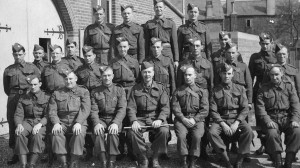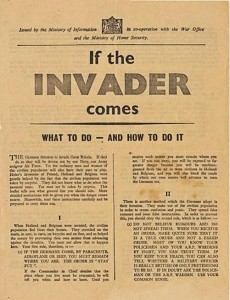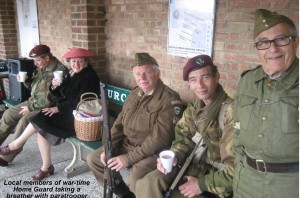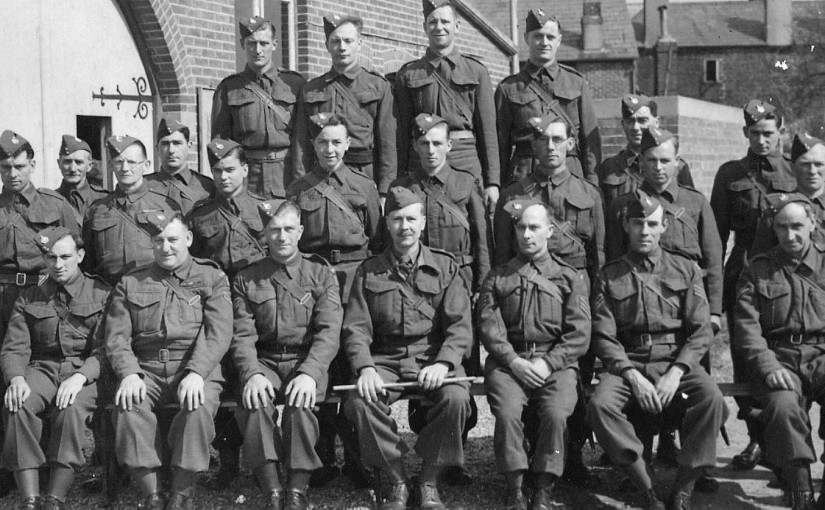After the evacuation of Dunkirk, there was a period of intense activity to prepare defences against an immanently expected invasion of South East England. The Germans were massed on the French coast after their lightening victories in France and the Low Countries. Now Britain was firmly in their sights. It would only be a matter of time before they turned their attention to invading the land they could see just 22 miles away over the English Channel.
Following six weeks of fighting in May and June, France had yielded to the Nazi invasion. An armistice was signed on 22 June, Britain was the only country still resisting Germany. Hitler assumed the British would capitulate after her army had been swept into the sea off the beaches of Dunkirk.
The Fuhrer was amazed when Britain did not surrender. On 16 July, he issued ‘Directive Number 16’. This initiated preparations for an invasion of Britain. Operation Sealion. It’s stated aim was to invade and occupy as soon as possible.
The prerequisite for an invasion would be the elimination of the RAF. Control of the air would prevent the British Navy from interfering with the landings. Hermann Göring the commander-in-chief of the Luftwaffe boasted to Hitler that his air force, numbering five times that of the RAF, would wipe out RAF Fighter Command in just four days
Initially, Directive 16 envisaged a landing along the southern coast of England, from Lyme Regis in Dorset to Ramsgate in Kent, but was soon modified and resulted in an invasion plan on a much narrower front with the German 16th Army leaving from the Calais-Ostend-Antwerp area and landing in the Folkstone-Dungeness area around Rye and at the Pevensey Marshes..
The first wave would have consisted of two infantry divisions, while the second wave was planned include two Panzer Divisions that were to break out of the beachhead and advance north
Support would be by parachute troops, who were to drop on the Downs above Brighton and in the Weald behind Hythe to seize the Royal Military Canal, which the Germans considered a formidable anti-tank obstacle that could, if not bridged, stall the advance of their panzers.
German forces planned to begin the air attack on 5 August. An invasion date was dependent on the success of the air battle.
German preparations for the aftermath of a successful occupation of Britain included the arrest of key people who could pose a threat to their regime. The SS’s “Black Book” contained names, including Churchill and other political leaders, writers and journalists such as Noel Coward, H.G. Wells and E.M. Forster. Local Council leaders and Freemasons were also high on the list
Whilst the Germans savoured their victory over France and began detailing their preparations for the invasion of Britain, the RAF was steeling itself for the critical battle to come.
Hythe, Rye and Hastings would have met the invaders full on

Hythe, Rye and Hastings were to bear the brunt of this attack, the flat marshes providing landing areas for enemy aircraft and the long shingle slopes of the sea shore line to take the invasion barges. The date sketched in by the German High Command for September 15th 1940, but this was unknown to those who waited to face the all conquering Panzer divisions that had bludgeoned their way through France and the Low Countries in just a few short weeks.
On the evening of Tuesday 14 May 1940, the Government made an urgent appeal on the radio to all men aged between 17 and 65. The wanted men not already serving in the armed forces to become part-time soldiers. Within 24 hours of the radio broadcast a quarter of a million had volunteered. By the end of July this number had risen to over a million.
Many of the men who joined the Home Guard were those who could not join the regular army because their day time jobs were necessary to keep the country running. They included farm workers, bakers, teachers, grocers, bank staff and railway workers. Other men who joined were either to young or too old to join the regular army.
The men were given military style training and, at first, they had no uniforms and little equipment. The public were invited to give their shotguns and pistols to the LDV (Local Defence Volunteers) and within a few months over 20,000 weapons were handed in. Many of the men made their own weapons too.
At the end of July 1940 the name was changed from Local Defence Volunteers to Home Guard
The Home Guard defended key targets like factories, explosive stores, beaches and sea fronts. At night they patrolled fields in which the enemy gliders or paratroops might land. No one expected them to beat well-trained German soldiers. Their job was to slow them down until the army arrived. The main role of the Home Guard was capturing German airmen whose planes had been shot down over Britain. They also guarded munitions factories and aerodromes and checked people’s identity cards.
Much civilian labour was drafted into the area to cut poles from local woodlands, each about 18 to 20 feet long and they were transported to Romney Marsh to be planted in all the fields considered capable of receiving landing aircraft. The poles were in a staggered pattern at roughly 50 yards apart. Other fields were protected with scaffold tube. “A” frames were set up on either side of long narrow fields, with a wire hawser suspended from frame to frame, anchored into the ground at each end. The fields between the New Road School at Rye and the river were treated in this way.

On the sea shore, a vast length of scaffold tubing barrier was constructed from Cliff End, Pett Level to Dungeness and beyond. It stood at about medium tide level. The Rye Harbour entrance was left open, but provision was made to block it with large floating logs linked together with wire hawsers. At the entrance to Broomhill Farm near Camber, another bizarre scheme was devised – to set the sea alight. Great tanks of fuel were set into the rear of the sea wall road embankment. Concrete bunkers to contain pumping equipment were built and pipes passed under the road and through the sea shore. The idea was that, on the approach of enemy landing craft, the pumps would fuel the sea and its surface would be ignited with mortar flares. This burning fuel operation was actually tested and for many years after the event, the timber groynes remained charred and the beach stones above high water had turned pink and white due to the high temperatures created.
Local folk law insists that plans to flood large areas of the Marsh around New Romney with oil, ready to be set alight as soon as the invaders arrived were in hand, but there seems no official recognition of this,
The village of Dengemarsh south of Lydd was evacuated and the army moved in. This area became a large training area during WW2 and is still used today, known as the Lydd ranges. The villagers never returned.
There are two military Ranges on the Marsh at Hythe, which predates the Second World War by two centuries and Lydd, which came into being in WW2 and is still used to this day.
Miniature Armoured Train
The Romney Hythe & Dymchurch Railway was requisitioned by the War Department. They converted one of the engines into a miniature armoured train.
All reference to town and village place names were obliterated or removed from shop fronts, posters, vehicles, etc. An example can still be on a stone of the Rye Literary Club. The engraving had been filled in with cement mortar, most of which had been removed since, but traces still
remain. All highway sign posts were removed. It probably did not cause too much of a problem to a traveller because there was so little civilian traffic, other than bus services and local deliveries. It is doubtful that any of these measures would have hindered an invading army.
Day-to-day life in the towns changed constantly as more and more regulations came into force. Church bells were ordered to remain silent, to be used only in the event of enemy parachutists or airborne troops landing. Overnight town and villages suffered the consequences of war further when, in June, they lost their identities with the removal of all signposts, posters, bus signage and so on bearing the town’s name.
NO GO FOR NON-RESIDENTS
The seriousness of the situation was further compounded in Hastings, Rye and Hythe as they became part of a strip of land approximately 20 miles wide extending from the east coast of England through to Portland, known as a Defence Area, which essentially banned all non-residents. Road blocks were installed at all entry points to the towns and were strictly guarded by the military.
In Rye small boats within the harbour and river were collected together and taken through the Tillingham Sluice. They were then gathered together between the sluice and the railway bridge awaiting their mass destruction in the event of invasion. Many remained there for the duration of the war – some simply breaking up through neglect.
Anti-aircraft guns were dispatched to towns and villages in the expected invasion area. Two 40mm Bofors guns arrived in Rye – one sited across the playing field of the Senior School. The second one was in Rye Harbour Road, on the site of what is now the Jehovah Witness meeting house. These sites became permanent for the duration, they had buildings of prefabrication concrete alongside them, which were the living facilities for the gun crews.
From time to time other guns of this calibre would appear and be set up on other sites around the town, but only for short periods – such as at the rear of Badger Gate, the Gun Garden, a site beyond the last house on New Winchelsea Road known as “Half Moon Battery” (a name from the Napoleonic era), and also at Leasam Farm.
There were Searchlights dotted around, usually away from built up areas. A good example was the one at Offens Farm, East Guldeford, on the A259, mid way between the Star Crossing and Kent Ditch Corner. There were many more in the area, as could be witnessed at night, when they so often combed the sky.
The British Army were generally made up to regiments or units with a distinctive cap badge. But they were divisions, corps, commands – so that one would find a number of different regiments in one formation. The formations were distinguished by a cloth shoulder patch on uniforms and their vehicles carried the same insignia both front and back, so that they became very familiar in their locality.
Men of the anti aircraft and searchlight units were of the Royal Artillery, but their formations insignia was of the Anti Aircraft Command – a red square depicting a black bow and arrow held a pair of fists.
From 1940, there was to be a military presence in all towns in the invasion area, in fact there were units of all three services visible in Hythe, Rye and Hastings until the war’s end.
The Royal Sussex Regiment, Irish Fusiliers, and some units of the Devonshire Regiment, (a detachment of the 45th division), were also stationed in the area manning artillery positions. Their division sign was Drake’s Drum.
There were also units of the Royal Artillery stationed in and around the towns, before and through the period of the Battle of Britain. The role of defending the towns in the event of invasion was theirs. Rye’s, which was on the German plan to be at the very centre of the invasion thrust, had immediate natural defences of the River Rother on the East side, Rock Channel on the South and the River Tillingham on the West. Each of the bridges crossing these lines were charged with explosives and guarded day and night.
BRIDGES DEFENDED AND READY FOR DESTRUCTION
The railway bridge over the Rother had a concrete pillbox to defend it on the town side, which is still in existence today. Monkbretton Bridge’s pillbox was close by the Fishmarket and it was demolished in 1970. Another, in Phillip’s Boatyard, Rock Channel is still in existence, as is the one at Brede Sluice, by the Sluice Keeper’s Cottage on Rye Harbour Road. The Tillingham Bridge and Sluice crossing was defended by an underground bunker. The site is under the brick paved area by the traffic sign to the right of the Strand Cafe. Its gun ports were at road level and camouflaged as a grassy knoll. The Mill railway bridge and Ferry Road bridge had no defending pillboxes.
At the time of the construction of these pillboxes and many others around the countryside, they were camouflaged by using sections of timber holiday buildings taken from Camber and Winchelsea Beach, as timber sheds and the like. (All the population of Camber and Winchelsea Beach had been forced to move out leaving ghost villages, occupied by military personnel only.)
To close the defensive ring around Rye, on the northern side, from the River Tillingham at Rovendene Cottage, a chain of concrete dragons teeth were constructed in four alternate rows as a barrier, stretching up Leasam Bank to a point between Hill House and the Ambulance Station on the A268, where an example remains. It recommenced on the wide grass verge on the east side of the road and turned into the present garden of Shellfield. (Here a section lies buried). It follows the south side of New England Lane, down to the Cliff Edge overlooking Military Road. It recommenced on the east side of Military Road to terminate on the bank of the River Rother.
Two further sets of Dragon’s Teeth were set in the river bank at the rear of 109 Military Road and also in Deadman’s Lane which could be blocked by them. Two still exist there behind the railing fence.
The A268 and Military Road openings through the system were to be closed by a concrete block barricade, the blocks being stored at the road edge until required. The design of the blocks were quite ingenious. There were two types of concrete blocks. One was pear shaped with a rounded base, each stone having a central hole through it, where a steel bar was to be inserted. Each block would be linked together by a steel chain set across the road. The idea was that if and when a vehicle attempted to push through the blocks, they would gyrate and roll erratically to snare vehicles. Defending troops would then put the vehicle out of action and this increase the block by its presence. The second type was a cylindrical block able to be rolled into the road and be stood on end with the aid of steel bar. This would create a solid obstacle in the same manner. Both types of road blocks are still to be found, usually as road verge bollards.
Within this defence perimeter were batteries of 25 pounder fields guns on two sites. One was in Tillingham Avenue, just beyond the last of the terraced houses. These guns were set in a steel ring on concrete bases and could be traversed to cover the northern approaches to the town. An avenue of high elm trees existed along the path at that time and made good cover. The guns, limber and vehicles were all covered by large camouflage nets supported on posts. there were probably three guns and their bases remain to this day.
The second battery of 25 pounder guns were to be found in the small field at the rear of houses 51-63 South Undercliff facing south. They were also under camouflage nets. The old Scout Hut served as a billet and cookhouse – a bungalow called the Anchorage and Mr Paine’s bungalow on Shipyard Lane now stand on its side. A number of Howitzers were sited to the rear of the Rother Iron Works. These guns covered the sea and approaches to Rye Harbour.
Outside this defensive ring were many other concrete pillboxes and a 25 pound artillery position on the Camber Road, opposite the Rye end of the Golf Links. There were pillboxes situated on the Military Canal between Rye and Hythe.
A battery of heavy artillery was sited in the wood adjacent to the entrance of Fagg Farm (now known as Gillshaw Farm), at the top of Udimore Hill, and was manned by troops from Newfoundland. Their formation insignia was of the XII Corps – it was counter invasion. The insignia depicts three native trees – the oak, the ash and the thorn. These heavy guns were well placed to cover Rye Bay and the marshes.
Those living in New Road/Kings Avenue, found themselves now outside of the town’s perimeter defences. Each time they wished to cross over Monkbretton Bridge, day or night, they were subjected to ‘stop and search’ by the sentries – men of the Irish Fusiliers who had just returned from the Dunkirk evacuation. After a week or so, the majority were allowed to pass unhindered, as they became known to the sentries. At night it was quite a different situation. On approaching the bridge in the darkness of the blackout a sentry would call “Halt! Who goes there?” They responded with “Friend”; His reply was “Advance friend and be recognised!” It was then a case of showing an identity card which was taken by the sentry who would then require the presenter to repeat their Identity Number correctly. Only then was the timber and barbed wire barricade drawn aside and the resident allowed to pass.
Spies Land At Dymchurch
The necessity for these precautions is demonstrated by the fact that three German spies landed near Dungeness on the night of 2/3 September. They were caught individually by Police and Home Guards, one after entering a pub in Lydd and asking for cider out of hours and having no idea of what one and a tanner meant.’ Two radio transmitters were recovered Three of the four were hanged for treason.
The ensuing weeks saw many modifications to the Monkbretton Bridge defences. Great concrete square blocks were built on either side of the road with slots which allowed steel rails to be passed through; concreted slots in the road surface were made in which tall, large section stanchions, bent at 60 degree angles, could be implanted in the road way. Those walking over the bridge got used to the sight of the menacing wires running along the bridge structure to the explosive charges.
Other important bridges throughout the invasion area were being guarded and prepared for destruction if necessary.
Going back beyond the War to the 1930s, many older readers will recall it was common practice to enjoy a Sunday afternoon walk in the town and surrounding countryside, dressed in “Sunday Best”. Many families continued this practice in those difficult days of 1940, and Clifford Bloomfield, who’s memoirs make up a great part of this article, recalls his family carried on the tradition, often his grandparents went too. During the early and mid 1940s, one to two of the RAF boys would join them. They were ordered to carry a rifle and respirator at all times, and Clifford, as a 13 year old, remembers eagerly carrying the rifle for some part of the way. Can you imagine being in company with a service man carrying a rifle in England today?
During the first few months of the War, when the German Army was terrorising Poland and Norway, the main fear in England, especially in big cities, was of gas attack from the air. Many children from London were moved to the seaside in various parts of the country. When the Germans overran France and Belgium and German forces were massing across the Channel the situation was dramatically changed.
Hastings was in grave danger

It became evident that Hastings was in grave danger when the London children, who had made Hastings their home for 9 months were re-evacuated to other parts of the country. It could only be a matter of time until Hastings’ own vulnerable were removed to safer areas.
Just five days before the first enemy attack on Hastings, some 3,000 school children were evacuated to ‘safe’ reception areas in Hertfordshire and Bedfordshire. All Hastings schools were closed with immediate effect.
The St. Clements Caves in Hastings formed a natural air-raid shelter for many Old Town families when bombing began in 1940. The caves were kitted out with 500 bunk beds and a new entrance was knocked through into Croft Road. The people ate, slept and generally lived as an underground community. A fully equipped medical centre, sick bay and dining hall were also added and an official inspector from the Civil Defence Commissioner remarked that it was “the best air-raid shelter in the country”.
A register of all bicycles was prepared by either the Local Defence Volunteers or the Police. They visited every household, shop etc. and noted the frame number and a general description – using a chart. In the event of any enemy landing, these cycles were to be gathered in, either to be used by our own forces or to be destroyed.
During the counter invasion preparations, King George Visited Rye and lunched at the George Hotel. He inspected defences at Rye, Hastings and Folkestone during that nervous summer of 1940.
Fair Meadow, Rye Hill, at that time was like open parkland and a good number of mature oak trees were spread over it. Locals on Sunday afternoon walks witnessed a tented army camp with vehicles and tanks standing under the trees.
WAITING FOR THE INVASION

From the moment that the first soldiers, lifted from the beaches of Dunkirk, started coming through Rye in troop trains Arthur Woodgate recalls that they waited and watched as each train passed through, half expecting that the next one might be filled with German Storm Troops.
Winston Churchill was the new Prime Minister and his carefully chosen words brought hope and resolve to the populace
“Even though large tracts of Europe and many old and famous states have fallen or may fall into the grip of the Gestapo and all the odious apparatus of Nazi rule, we shall not flag or fail. We shall go on to the end, we shall fight in France, we shall fight on the seas and oceans, we shall fight with growing confidence and growing strength in the air, we shall defend our island, whatever the cost may be, we shall fight on the beaches, we shall fight on the landing grounds, we shall fight in the fields and in the streets, we shall fight in the hills; we shall never surrender.”
With the surrender of France, Britain indeed ‘stood alone’. Churchills words made it quite clear to Hitler that there would be no capitulation here. The men of the Cinque Ports were once again at the forefront in the Defence of the Realm. They were in no mood to give in to the tyrant from
Germany. They would be defending their own ground as they had done 500 years before against the French and Spanish that came by sea. This time the Germans may be dropping from the skies as well as coming by boat. As the defenders waited, the Battle of Britain was about to begin.
“Rye’s Own” March 2014
All articles, photographs and drawings on this web site are World Copyright Protected. No reproduction for publication without prior arrangement. © World Copyright 2015 Cinque Ports Magazines Rye Ltd., Guinea Hall Lodge Sellindge TN25 6EG
